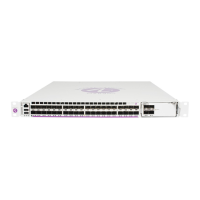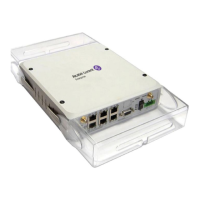OmniSwitch OS6860/OS6900/OS10K Troubleshooting Guide Part No.032996-00 Rev.A
AOS Release 7.X and 8.X January 2015
Alcatel-Lucent Page 37 of 148
6. Troubleshooting ARP
The OmniSwitch supports Address Resolution Protocol (ARP). In order to troubleshoot issues related to ARP,
a basic understanding of the ARP protocol is required.
ARP is one of the major protocols in the TCP/IP stack. The purpose of ARP is to resolve an IPv4 address (32
bit logical address) to the physical address (48 bit MAC address). Applications at the application layer use
IPv4 addresses at the network layer to communicate, but at the Datalink layer, the addressing is a MAC
address (48 bit Physical Address).
The purpose of Address Resolution Protocol (ARP) is to derive the MAC address of a device in your local
subnet, for which you have a corresponding IPv4 address. This allows you to properly frame the IP packet with
a correct MAC destination in the Ethernet header.
When SRC machine 192.168.10.100 wants to reach the DST machine 192.168.20.100, the SRC machine looks
at its routing table to find the next hop. On most PCs, the default gateway is used for routing. Assume, the
default gateway on SRC is 192.168.10.1 (router1), the SRC will need to learn the ARP entry for its gateway.
The router1 will also need to learn the ARP for the DST machine to forward the packet receieved from SRC.
If SRC machine is not able to communicate with DST machine, it could be the result of an ARP resolution
failure.
Summary of the commands in this chapter is listed here:
___________________________________________________________________
show mac-learning mac-address <MAC address>
show arp <IP address>
show arp <MAC address>
show arp summary
debug ip packet start ip-address <IP address> start timeout 2
arps
arpstat
cat /proc/alv4/stats
____________________________________________________________________
6.1. Basic Troubleshooting
To troubleshoot ARP the first step is to verify the MAC address of the SRC machine and DST machine are
learned on the correct port in the correct VLAN.
OS6860-> show mac-learning mac-address 00:13:72:19:5e:1f
Legend: Mac Address: * = address not valid,

